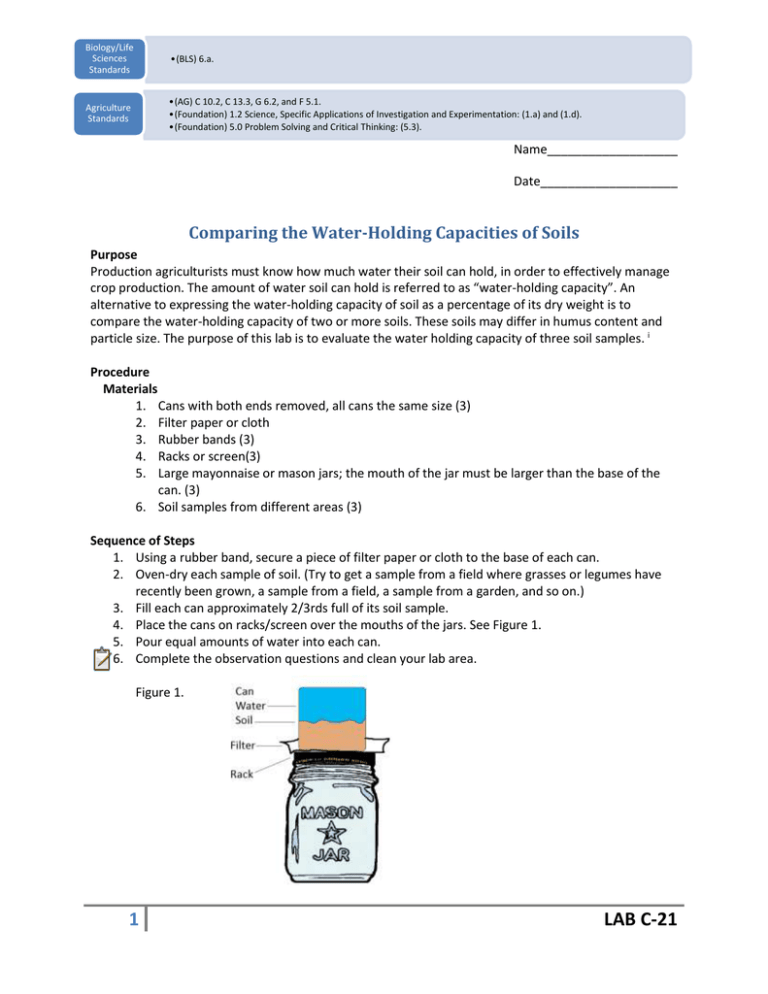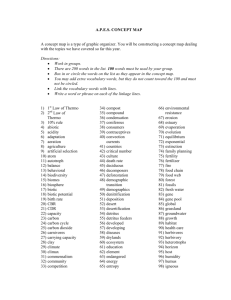C-21 Comparing Water Holding Capacities of Soil
advertisement

Biology/Life Sciences Standards •(BLS) 6.a. Agriculture Standards •(AG) C 10.2, C 13.3, G 6.2, and F 5.1. •(Foundation) 1.2 Science, Specific Applications of Investigation and Experimentation: (1.a) and (1.d). •(Foundation) 5.0 Problem Solving and Critical Thinking: (5.3). Name___________________ Date____________________ Comparing the Water-Holding Capacities of Soils Purpose Production agriculturists must know how much water their soil can hold, in order to effectively manage crop production. The amount of water soil can hold is referred to as “water-holding capacity”. An alternative to expressing the water-holding capacity of soil as a percentage of its dry weight is to compare the water-holding capacity of two or more soils. These soils may differ in humus content and particle size. The purpose of this lab is to evaluate the water holding capacity of three soil samples. i Procedure Materials 1. Cans with both ends removed, all cans the same size (3) 2. Filter paper or cloth 3. Rubber bands (3) 4. Racks or screen(3) 5. Large mayonnaise or mason jars; the mouth of the jar must be larger than the base of the can. (3) 6. Soil samples from different areas (3) Sequence of Steps 1. Using a rubber band, secure a piece of filter paper or cloth to the base of each can. 2. Oven-dry each sample of soil. (Try to get a sample from a field where grasses or legumes have recently been grown, a sample from a field, a sample from a garden, and so on.) 3. Fill each can approximately 2/3rds full of its soil sample. 4. Place the cans on racks/screen over the mouths of the jars. See Figure 1. 5. Pour equal amounts of water into each can. 6. Complete the observation questions and clean your lab area. Figure 1. 1 LAB C-21 Observations 1. Describe your observations from this lab using complete sentences. 2. Which soil sample absorbed the most water? Why? 3. Why would some soil samples be unable to absorb large amounts of water? 4. How does water naturally cycle through the soil through photosynthesis? 5. Agriculture application: Suppose you talk with a farmer who grows vegetables in the Salinas Valley. He wants you to test his soil for water-holding capacity. Why is this important for the farmer? What decisions will it help him to make? i (2008).Comparing the Water-Holding Capacities of Soils. Prentice Hall, Inc. 2 LAB C-21




